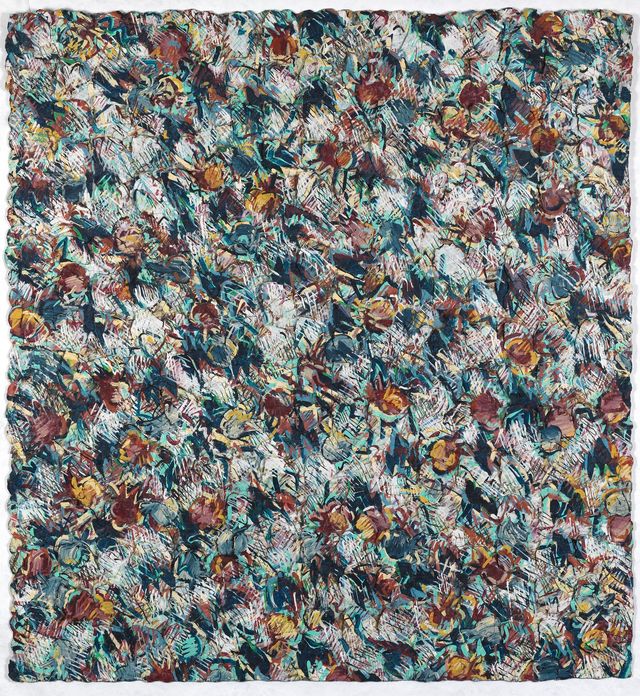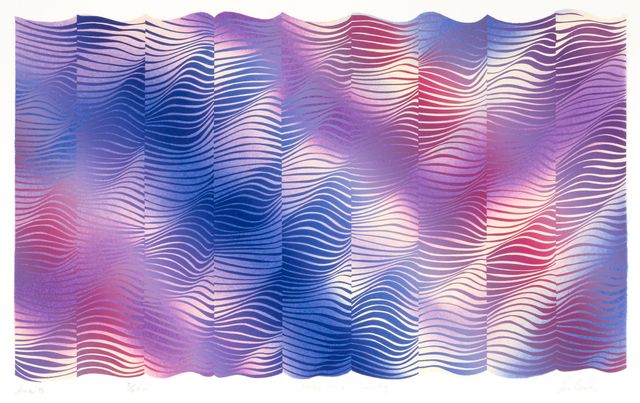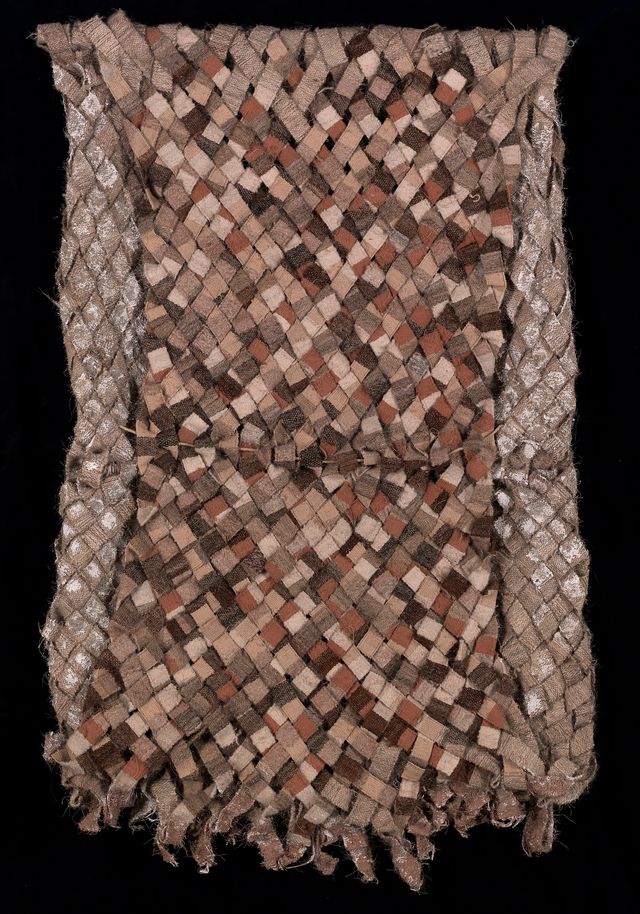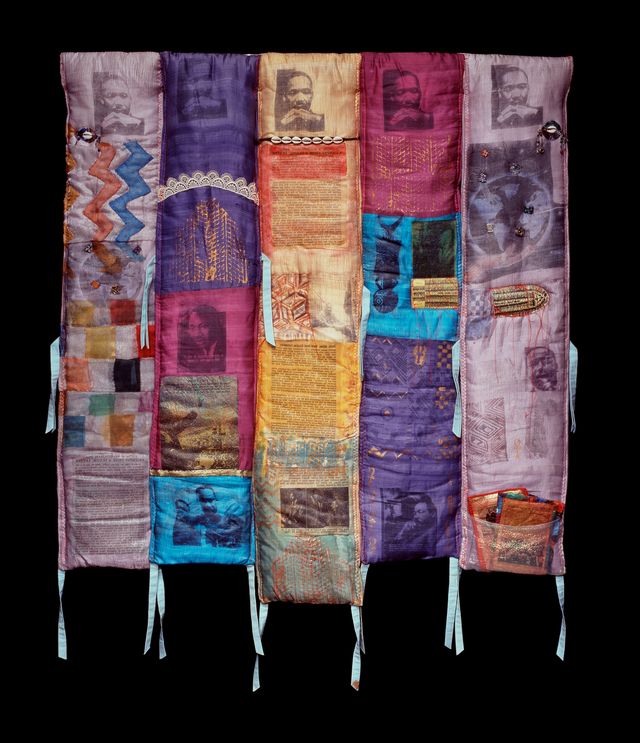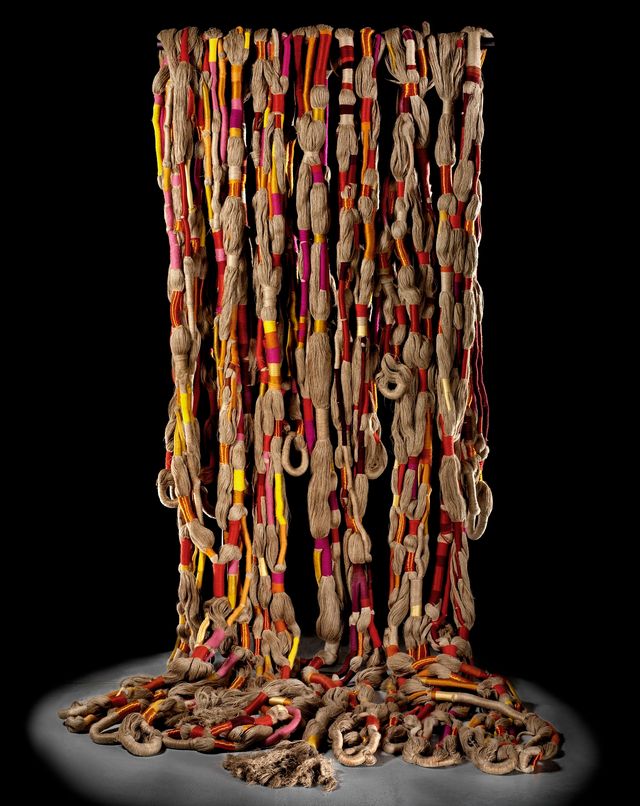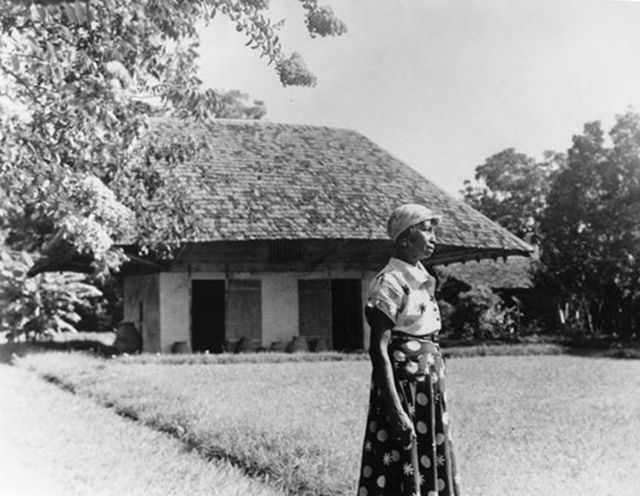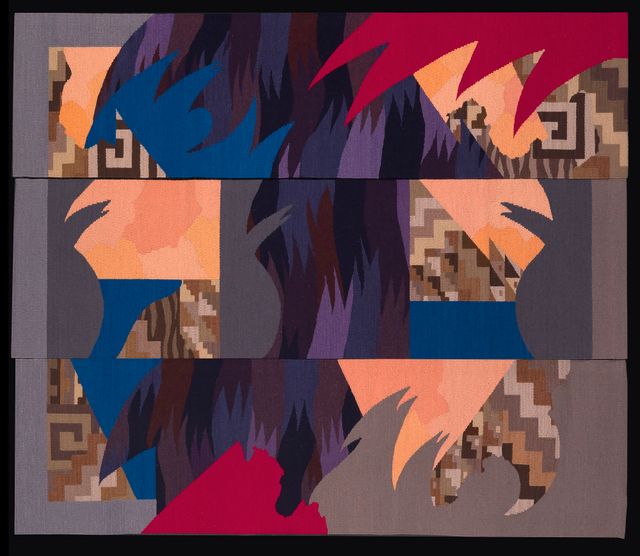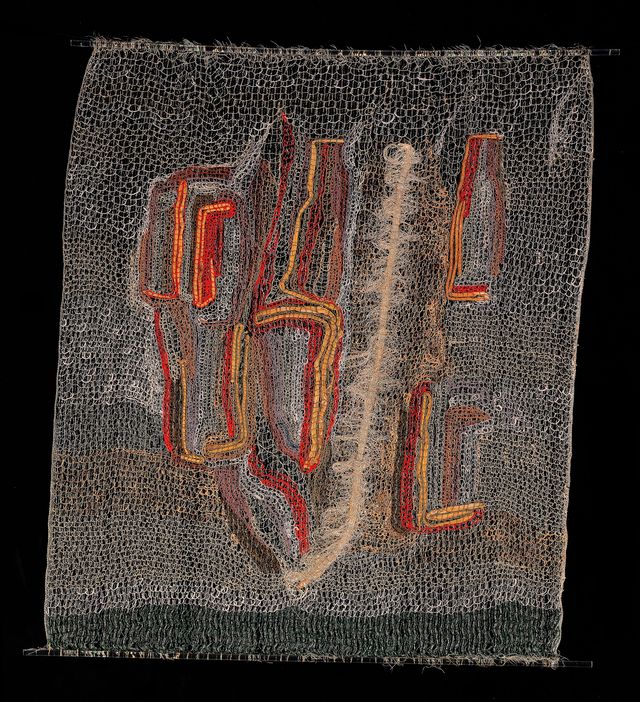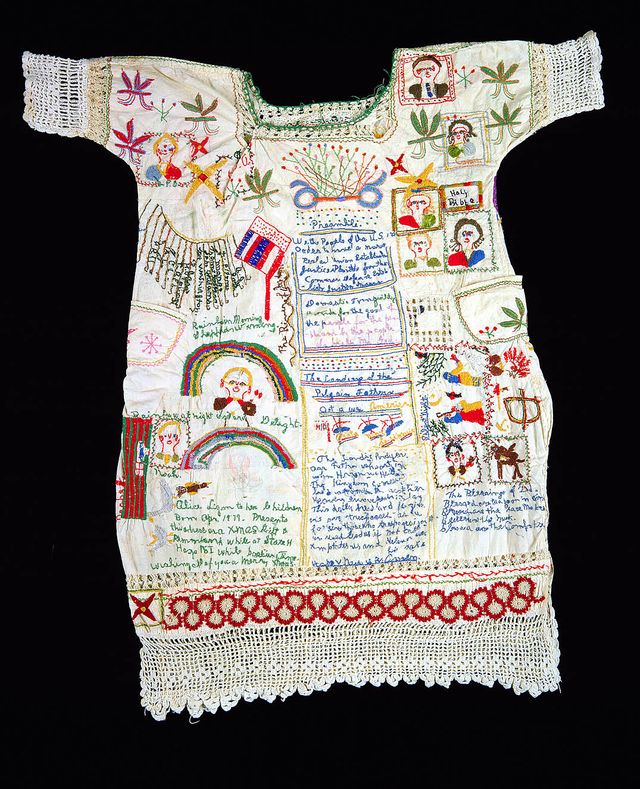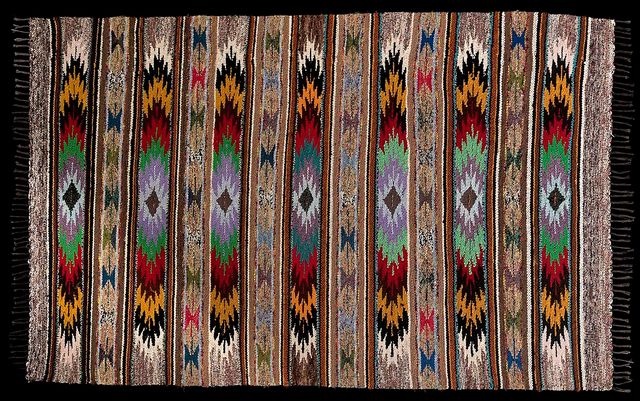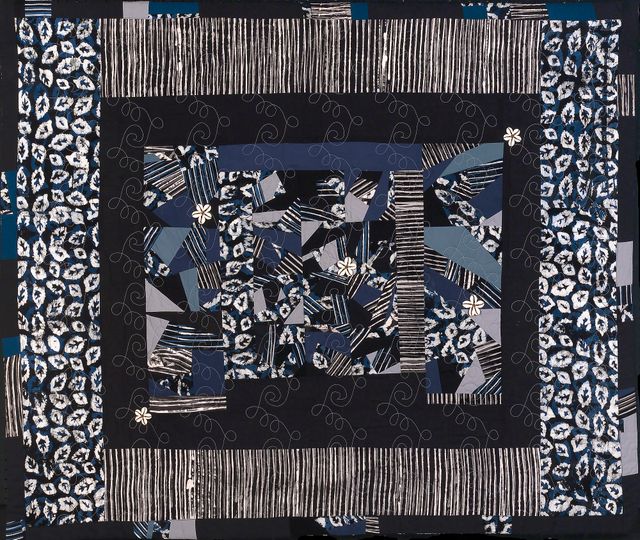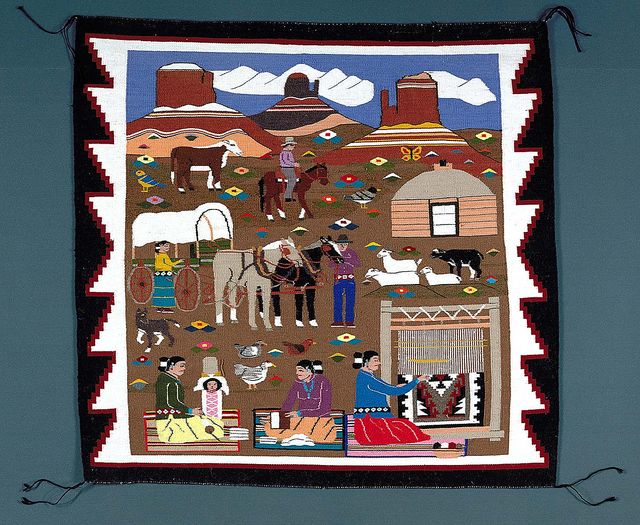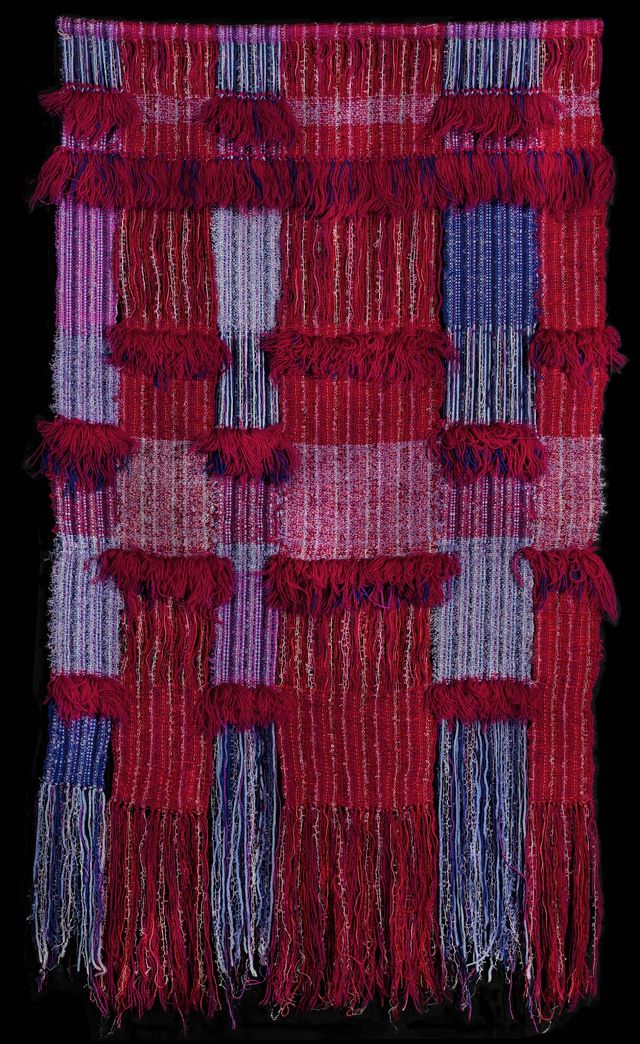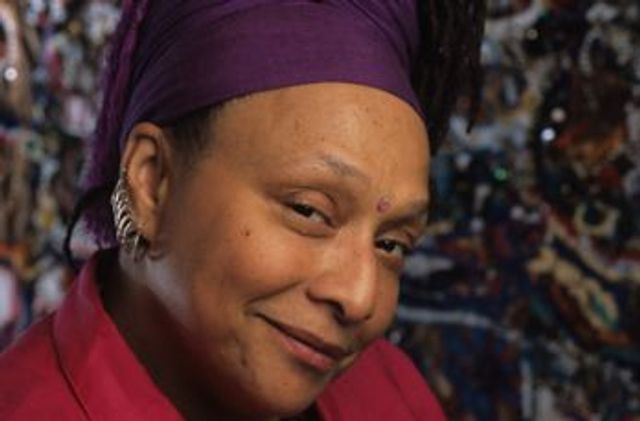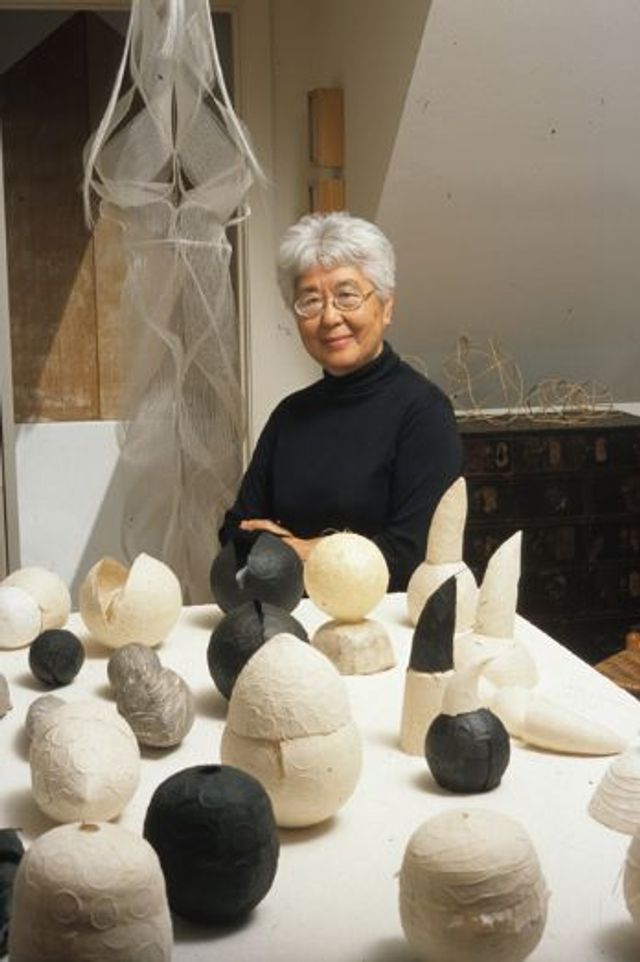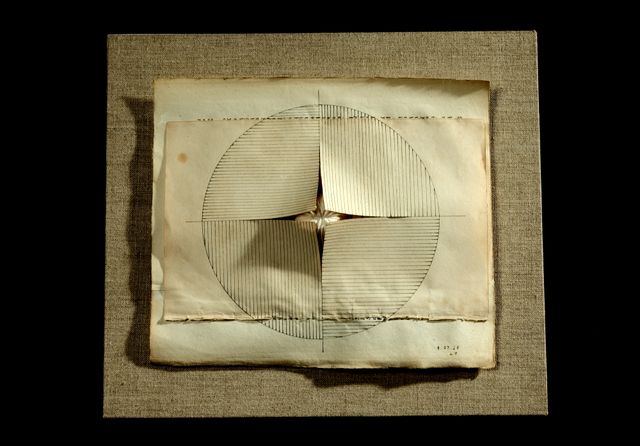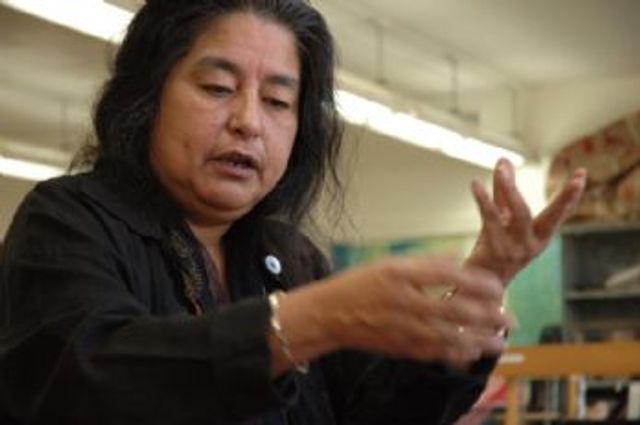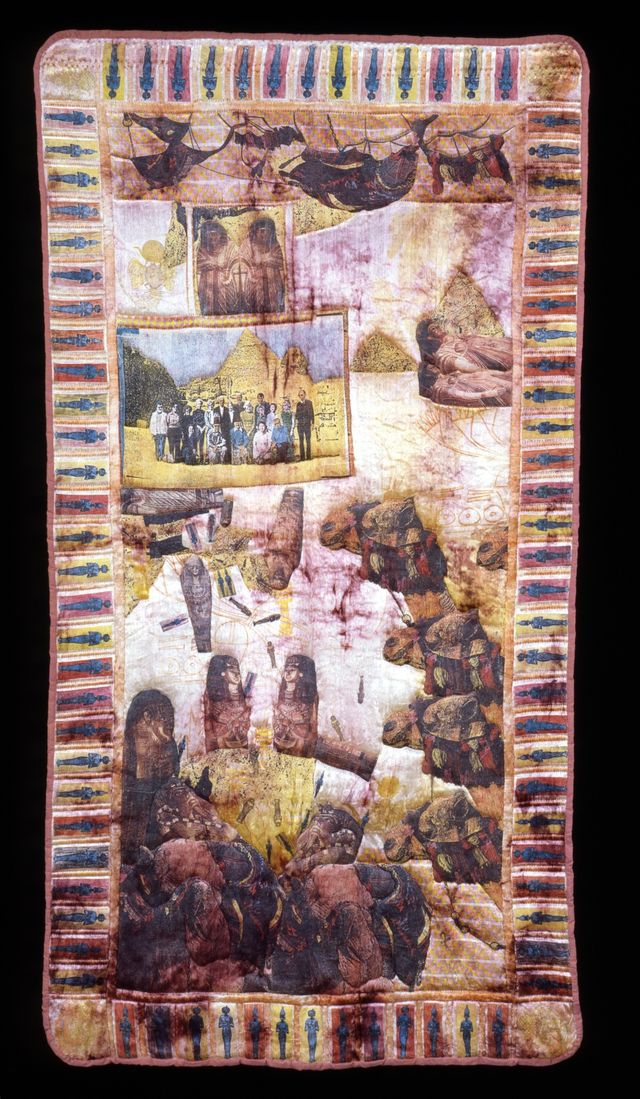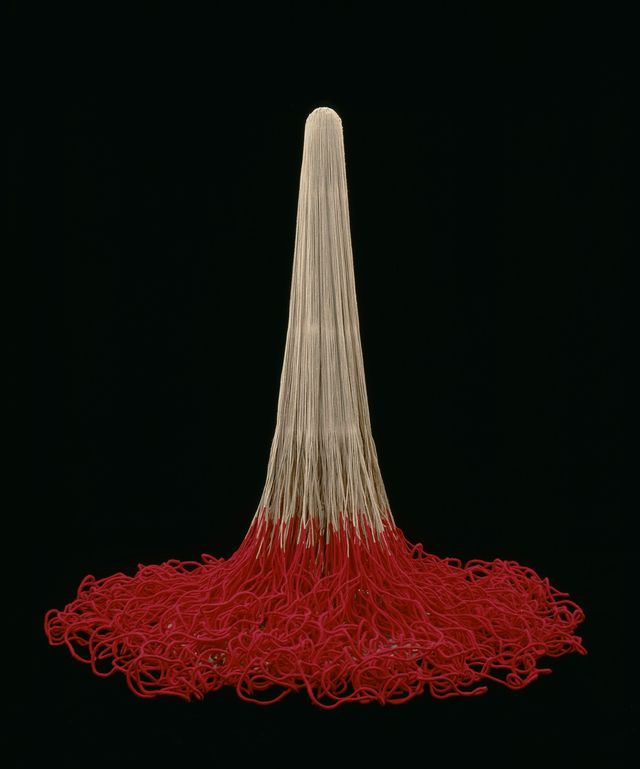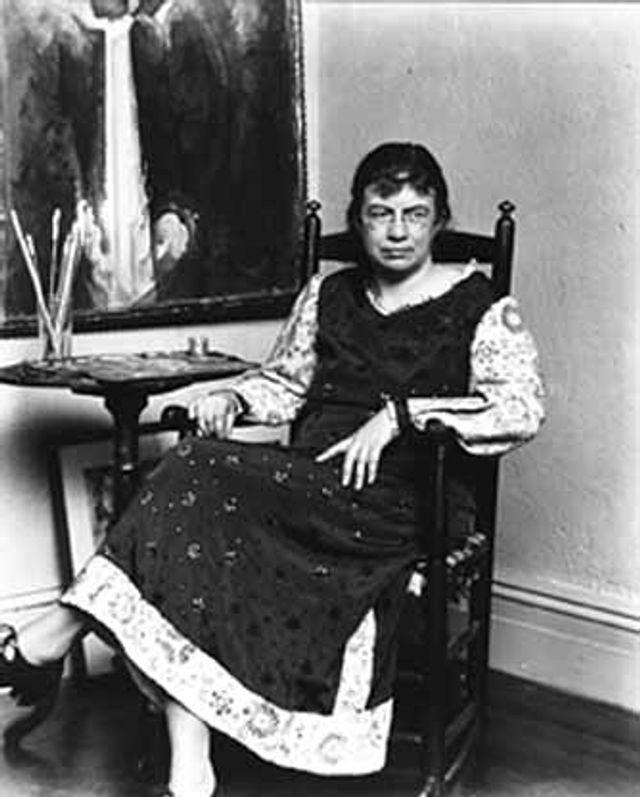Subversive, Skilled, Sublime: Fiber Art by Women

Emma Amos, Winning, 1982, acrylic on linen with hand-woven fabric, 75 × 64 in. (190.5 × 162.6 cm), Smithsonian American Art Museum, Museum purchase made possible by the Catherine Walden Myer Fund, 2019.15, © 1982, Ryan Lee Gallery, New York
The artists in Subversive, Skilled, Sublime: Fiber Art by Women mastered and subverted the everyday materials of cotton, felt, and wool to create deeply personal artworks. This exhibition presents an alternative history of twentieth-century American art by showcasing the work of artists such as Emma Amos, Sheila Hicks, and Faith Ringgold, who, stitch by stitch, utilized fiber materials to express their personal stories and create resonant and intricate artworks. An audio program highlights ten compelling backstories that are woven into the exhibition.
Description
Accessible and familiar, fiber handicrafts have long provided a source of inspiration for women. Their ingenuity with cloth, threads, and yarn was dismissed by many art critics as menial labor. The artists in this exhibition took up fiber to complicate this historic marginalization and also revolutionize its import to contemporary art. They drew on personal experiences, particularly their vantage points as women, and intergenerational skills to transform humble threads into resonant and intricate artworks.
The artworks are as diverse as the women who made them. Among the artists included in this exhibition are Adela Akers, Neda Al-Hilali, Emma Amos, Lia Cook, Olga de Amaral, Consuelo Jimenez Underwood, Sheila Hicks, Agueda Martínez, Faith Ringgold, Miriam Schapiro, Joyce Scott, Judith Scott, Kay Sekimachi, Lenore Tawney, Katherine Westphal, Claire Zeisler, and Marguerite Zorach. The artists expressed themselves in the form of sewn quilts, woven tapestries and rugs, beaded and embroidered ornamentation, twisted and bound sculptures, and multi-media assemblages. Each artwork carries the story of its maker, manifesting—stitch by stitch—the profound and personal politics of the hand.
Several themes place artworks in conversation with an emphasis on the artist’s own words: the complex (often contradictory) influence of domestic life; feminist strategies for upending the art world status quo; shared knowledge of traditional and experimental techniques; and pushing boundaries of the perception and possibilities of fiber art. A dedicated gallery space of archival materials provides a window into the artist’s studio, deepening insight into their creative processes with sketches, mail art, and photographs. Together, these categories illuminate how artists have invited moments of contemplation about the interplay between material and message.
The exhibition is organized by Mary Savig, the Lloyd Herman Curator of Craft; Virginia Mecklenburg, senior curator; and Laura Augustin Fox, curatorial collections coordinator at the Smithsonian American Art Museum, in collaboration with the Smithsonian’s Archives of American Art. The featured artworks are drawn entirely from the museum's collection, and the presentation includes archival materials and interviews from the archive's collections.
To complement the exhibition, SAAM produced a 10-episode narrative podcast, "Backstitch,” that allows listeners to hear directly from the artists in their own voices. These short- form audio explorations take a deeper look into the lives and creative practices of ten trailblazing artists represented in the exhibition. The podcast is narrated and produced by Emma Jacobs and Rachel Ward. The interviews were conducted for the Archives of American Art by Suzanne Baizerman, Robert F. Brown, Joanne Cubbs, Paul Cummings, Erin Gilbert, Mija Reidel, and Robert Silberman.
Visiting Information
Audio
A conversation with Adela Akers.
This is a modal window.
- A Loom of Her Own
- Make Something Beautiful
- Goodbye to All That
- A Family Affair
- Paper and Silk
- The Letter Writer
- Color in Her Soul
- Is This Art?
- My Spirit Gets Full
- Weaving is Binary
Credit
Subversive, Skilled, Sublime: Fiber Art by Women is organized by the Smithsonian American Art Museum with the Smithsonian's Archives of American Art. Generous support has been provided by The Coby Foundation, Ltd., The Kaleta A. Doolin Foundation, the James Renwick Alliance for Craft, and the Lenore G. Tawney Foundation. This exhibition received federal support from the Smithsonian American Women's History Initiative pool, administered by the Smithsonian American Women's History Museum.

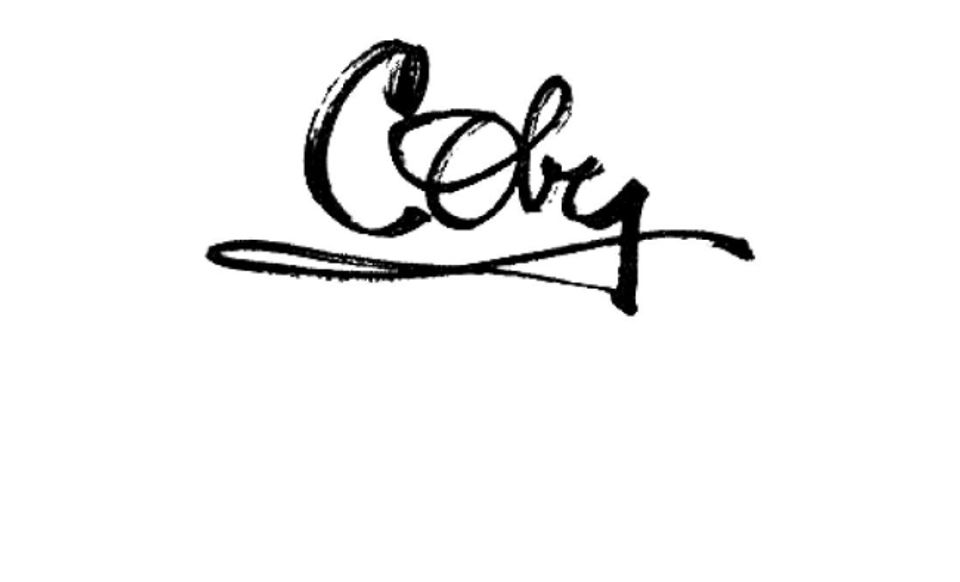

SAAM Stories


Online Gallery
Verbal Descriptions
Artists
In 1965 Adela Akers traveled to Peru as a weaving adviser to the Alliance for Progress Program. In South America, she was deeply influenced by the innovative textiles of pre-Columbian Peruvian weavers, and researched ancient fiber traditions.
Born in Ventura, California, Lia Cook studied theater at San Francisco State Universtiy before receiving her B.A. and M.A. degrees (1965 and 1973 respectively) at the Universtiy of California, Berkeley.
Painter and conceptual artist. Castagliola came to the United States from Cuba in 1961. She has B.A. (sociology), B.F.A., and M.F.A.degrees from the University of South Florida in Tampa and has taught art as an assistant professor at the university.
Self-taught embroiderer Mariska Karasz arrived in the United States from her native Hungary at the age of sixteen. The influence of Hungary's rich folk-art tradition is reflected in her early work.
Weaver, born in 1898 in Chamita, New Mexico. Attending primary school until 1913, Martinez first began to weave rag rugs at the age of twelve. In 1916 she married a weaver and schoolteacher and by 1937 had given birth to ten children.
Miriam Schapiro earned her master of fine arts degree at the University of Iowa in 1949 and in 1952 moved to New York City with her husband, the artist Paul Brach.
Born in Providence, Cynthia Schira earned a B.FA. degree at the Rhode Island School of Design an an M.F.A. degree at the University of Kansas, where she has been on the faculty since 1976.
Joyce Scott relates her work as an artist to her family's craft traditions and to her African American heritage. In her jewelry and sculpture, she employs humor and irony to address cultural stereotypes and issues of racism and sexism.
Against the odds, Judith Scott became an artist of great renown, making fiber and mixed-media sculptures that encase forever-softened objects. Scott and her twin sister were born in Ohio.
Born in San Francisco, Kay Sekimachi studied at the California College of Arts and Crafts in Oakland from 1946 to 1949.
In 1954 Lenore Tawney abandoned sculpture for weaving and in the process, transformed the ancient craft of the weaver into a new vocation—fiber art.
Fiber artist and weaver Consuelo Jimenez Underwood is the daughter of migrant agricultural workers, a Chicana mother and a father of Huichol Indian descent.
Born in Cincinnati, in the mid-1940's Claire Zeisler attended the Institute of Design in Chicago (now part of the Illinois Institute of Technology), where she studied sculpture with emigre artist Alexander Archipenko.
Painter, weaver, graphic artist. Along with her husband, sculptor William Zorach, she was an innovator in the modernist movement in the United States. With her embroidered tapestries, she distinguished herself as an outstanding designer.














